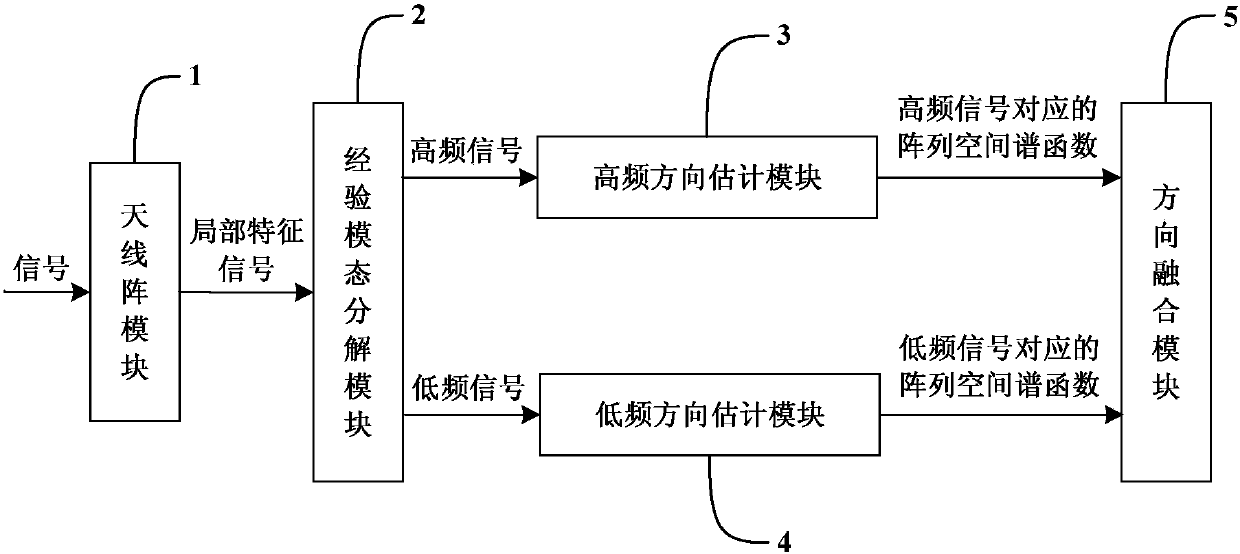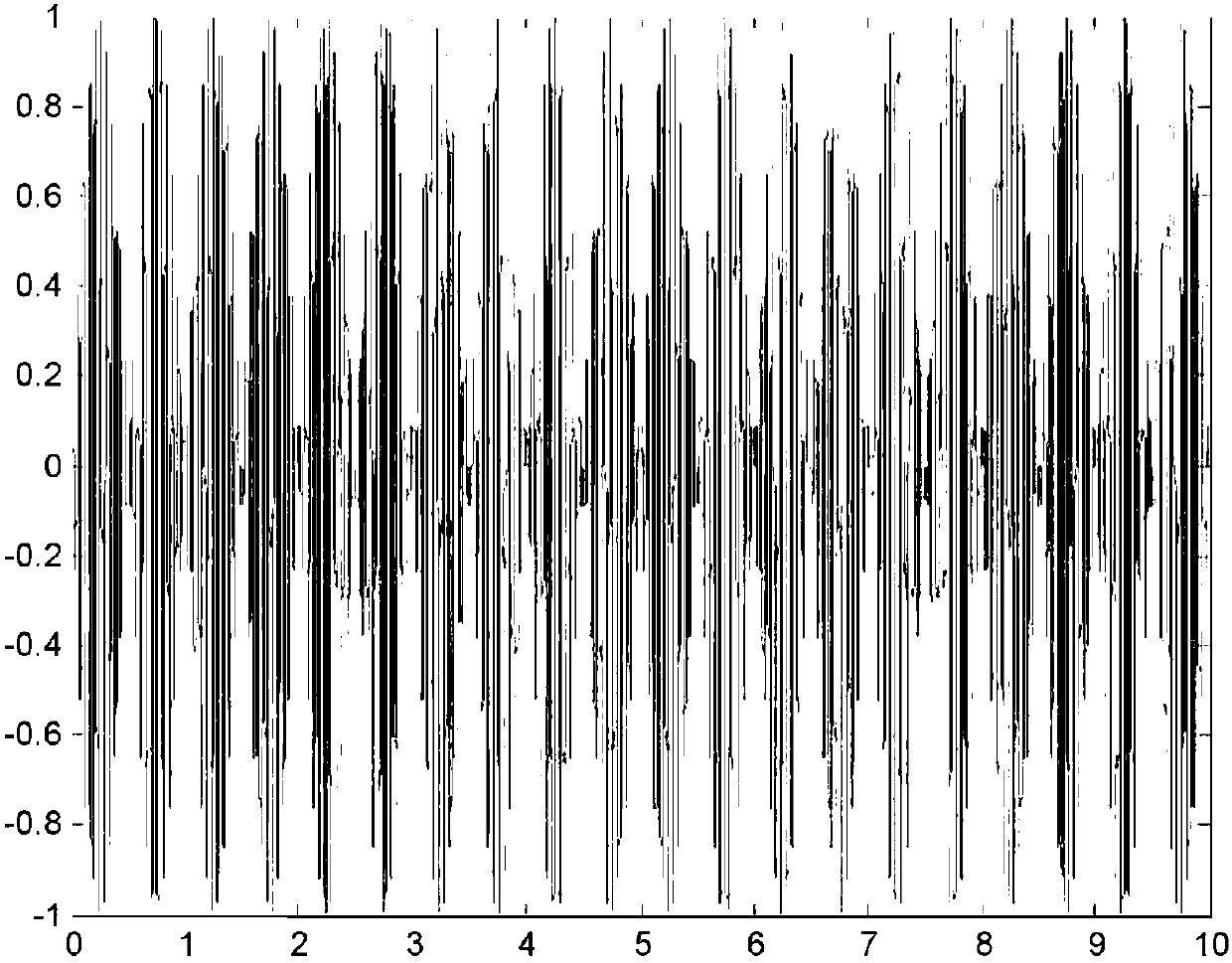Direction of Arrival Estimation System and Method for Smart Antenna Based on Empirical Mode Decomposition
An empirical mode decomposition and direction-of-arrival estimation technology, applied to radio wave measurement systems, instruments, etc., can solve problems such as limitations, poor real-time effects, and limited effects, and achieve the effect of improving suppression
- Summary
- Abstract
- Description
- Claims
- Application Information
AI Technical Summary
Problems solved by technology
Method used
Image
Examples
Embodiment Construction
[0070] The technical solution of the present invention will be further introduced below in combination with specific embodiments.
[0071] The invention discloses a smart antenna direction-of-arrival estimation system based on empirical mode decomposition, such as figure 1 with figure 2 As shown, it includes the antenna array module 1, the antenna array module 1 receives the signal and transmits it to the empirical mode decomposition module 2, the empirical mode decomposition module 2 decomposes the signal into local characteristic signals of different time scales, and the local characteristic signal The high-frequency signal is passed to the high-frequency direction estimation module 3 to obtain the array space spectrum function corresponding to the high-frequency signal, and the low-frequency signal in the local characteristic signal is passed to the low-frequency direction estimation module 4 to obtain the array space spectrum function corresponding to the low-frequency si...
PUM
 Login to View More
Login to View More Abstract
Description
Claims
Application Information
 Login to View More
Login to View More - R&D
- Intellectual Property
- Life Sciences
- Materials
- Tech Scout
- Unparalleled Data Quality
- Higher Quality Content
- 60% Fewer Hallucinations
Browse by: Latest US Patents, China's latest patents, Technical Efficacy Thesaurus, Application Domain, Technology Topic, Popular Technical Reports.
© 2025 PatSnap. All rights reserved.Legal|Privacy policy|Modern Slavery Act Transparency Statement|Sitemap|About US| Contact US: help@patsnap.com



